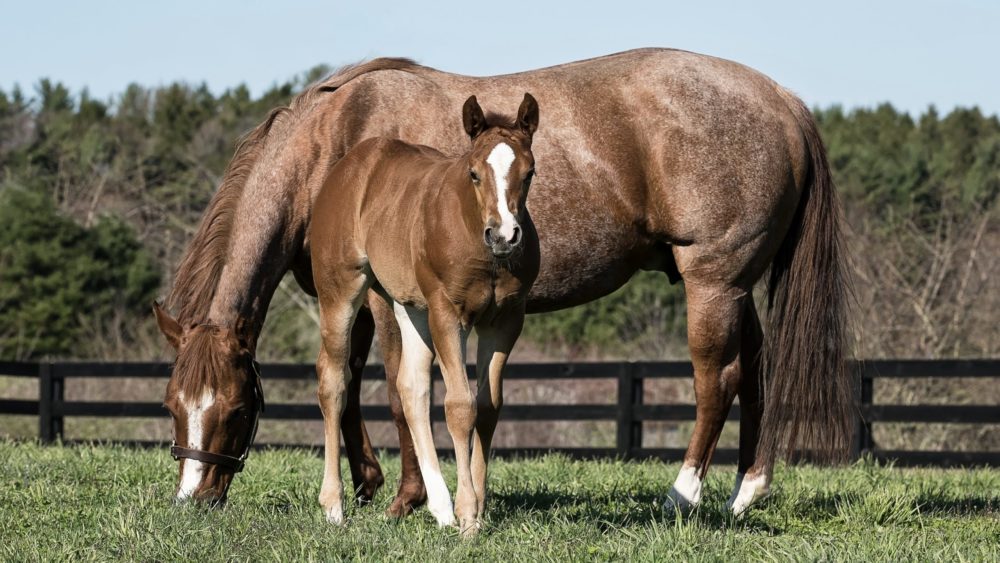There is a heavy focus on stallions in the breeding industry. Millions of dollars are spent annually on the advertising and promotion of stallions. As a result, prospective breeders spend loads of time, effort, and money searching for the perfect sire for their dream foal.
However, the stallion is only 50% of the breeding equation. With most industry experts agreeing that the mare is a critical, if not the essential, component in the quality of the resulting foal, we decided to ask them what they look for when selecting a broodmare candidate.
We spoke with Amy Gumz (Gumz Farms), Gary Trubee (Masterson Farms, LLC), and Debbi Trubee (North Farm) to get the scoop on what makes a quality broodmare.
Conformation:
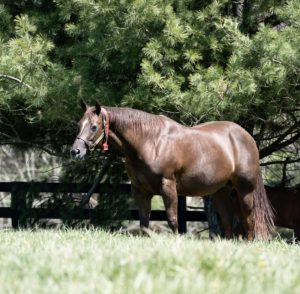 All three of our experts agree that the mare’s conformation is their number one consideration in determining whether she has reproductive potential.
All three of our experts agree that the mare’s conformation is their number one consideration in determining whether she has reproductive potential.
According to Amy, “Mares, like all horses, need to have form to function. Unfortunately, some traits are challenging to breed out, so starting with a mare that is as close to ideal as possible is a must for me.”
Amy looks for “balance and structural soundness” and avoids traits that inhibit long-term soundness or ideal movement (i.e., short necks, long backs, leg issues, etc.).
Gary reiterates that, “Good conformation leads to good movement – basic confirmation is just that, basic conformation. It is the foundation for breeding quality, sound, athletic animals.”
Debbi agrees that desirable conformation is the foundational consideration in a mare’s quality, saying, “No stallion can fix all of the poor qualities in the mare. So while you can expect some conformational improvement, you shouldn’t have a laundry list of bad qualities that need fixing.”
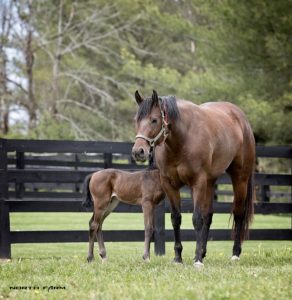 Debbi looks for conformational traits in her broodmare candidates to include: a high wither set, short back, strong hip, low tail set, and the neck needs to tie into the wither and shoulder properly. Additionally, the hocks should be set low, and she should have short cannons relative to her body size. Finally, Debbi wants a mare with good bone (substance to her body) and a deep girth (plenty of room for the heart and lungs).
Debbi looks for conformational traits in her broodmare candidates to include: a high wither set, short back, strong hip, low tail set, and the neck needs to tie into the wither and shoulder properly. Additionally, the hocks should be set low, and she should have short cannons relative to her body size. Finally, Debbi wants a mare with good bone (substance to her body) and a deep girth (plenty of room for the heart and lungs).
Debbi also wants a mare with “good feet,” which she describes as “round feet that match.” Debbi avoids mares with club feet or mismatched feet. She doesn’t mind if the mare is poor-headed, as long as she has a good, kind eye, and the head is proportional to the body.
Pedigree:
When analyzing a mare’s pedigree, Amy puts the most significant emphasis on the dam line. “I lean predominantly on the mare line and the kind of producers the mare line contains. I’ve found mares often breed toward their mothers and grandmothers, so looking to what their dams and maternal grand-dams have produced is extremely important.”
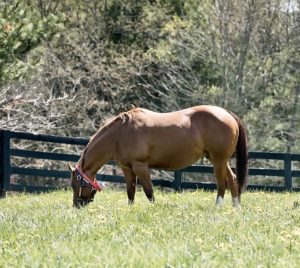 Amy will look to a mare’s siblings to lend credibility or discount their dam. If a mare’s dam or grand-dam is a great producer, it gives a lot of credibility to the mare’s reproductive potential, even if she is a maiden.
Amy will look to a mare’s siblings to lend credibility or discount their dam. If a mare’s dam or grand-dam is a great producer, it gives a lot of credibility to the mare’s reproductive potential, even if she is a maiden.
Gary also likes to take a hard look at a mare’s female line because, in his experience, the mares seem to have a more substantial impact on the quality of the resulting foal than the stallions. Therefore, he will trace a mare’s female line and research her family heavily before investing in her as a broodmare.
While Gary admits that you can’t ride the papers, he says you do ride the “family” – meaning that familial traits matter in the outcome and often add predictability to the resulting foal’s characteristics. He says this is why trainers prefer certain lines and avoid others based on the traits commonly associated with them.
Debbi finds that a broodmare candidate’s sire and dam lines play equally in her mind. She tends to be drawn to consistent pleasure lines and finds she likes to see Zippo Pine Bar, Good Machine, and Zippos Mr Good Bar-bred mares in her particular band.
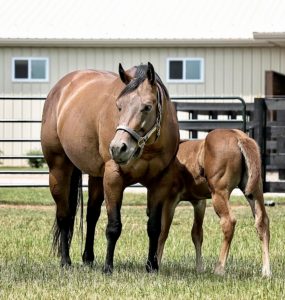 Gary agrees that certain lines tend to pique his interest more than others in a mare’s pedigree. However, he is a fan of seeing stallions like Awesome Mister, Good Version, and Investment Asset on a mare’s papers as they all made phenomenal broodmare sires.
Gary agrees that certain lines tend to pique his interest more than others in a mare’s pedigree. However, he is a fan of seeing stallions like Awesome Mister, Good Version, and Investment Asset on a mare’s papers as they all made phenomenal broodmare sires.
All of our experts believe that the pedigree is critical for the marketability of the offspring. Indeed, many buyers will look at the papers before assessing the prospect itself. A mare who is bred well, top and bottom, dramatically enhances the marketability of her foals.
While our experts agree that a strong pedigree will add marketability to a mare’s produce, simply because she is well-bred does not mean she should be bred. If the mare isn’t a quality individual in her own right, her papers don’t matter.
Produce Record:
 Debbi likes to consider the produce record if it is available. However, she finds it can take a long time for mares to develop produce records. Often, mares with reliable produce records are quite a bit older. Debbi puts a lot of effort into selecting mares that will impact her program for several years. Therefore, she tends to assess them based on traits other than their produce record, which is often yet to be established.
Debbi likes to consider the produce record if it is available. However, she finds it can take a long time for mares to develop produce records. Often, mares with reliable produce records are quite a bit older. Debbi puts a lot of effort into selecting mares that will impact her program for several years. Therefore, she tends to assess them based on traits other than their produce record, which is often yet to be established.
Gary likes to invest a lot of research time into a mare’s female line to see what the mare has produced, or if she is a maiden, what her dam, grand-dam, and sisters have produced. What sort of traits are her foals or her female family’s foals known for? He wants a female family with a reputation for producing trainable, talented, easy-going offspring.
Amy says she puts far more emphasis on a mare’s produce record than she does on her show record to determine her breeding quality, saying, “If she can’t out-produce herself, it doesn’t matter what she did as a show horse.”
***
Stay tuned for part 2 of this series as our breeding experts cover more factors to consider when breeding a mare including: movement, temperament, genetic disease, and overall purpose.


